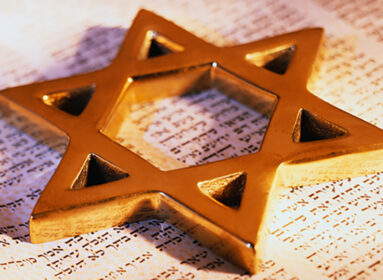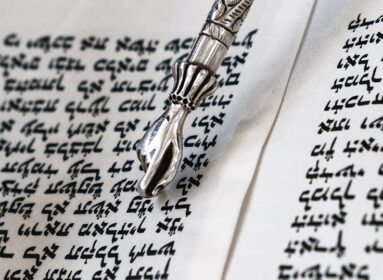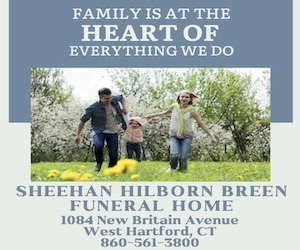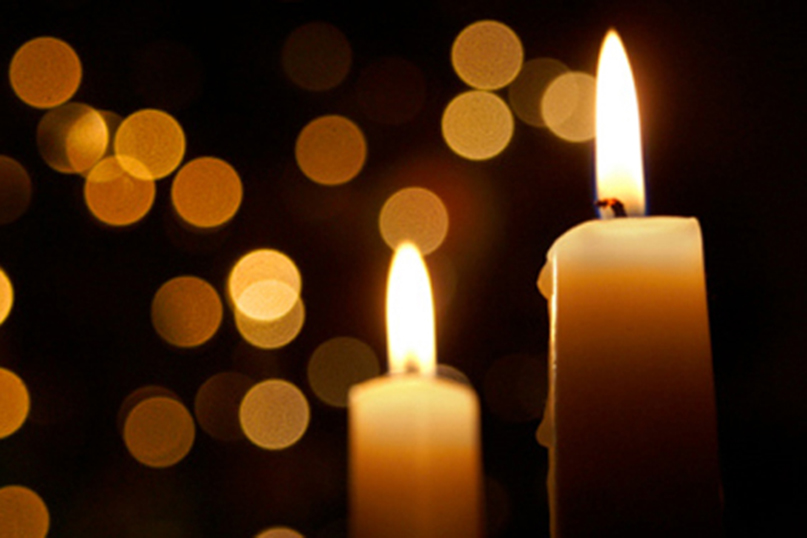
Traditional Jewish mourning practices are largely impossible to observe during the coronavirus pandemic. But we can still come together to mourn those in the Jewish community we’ve lost in recent days to COVID-19. To celebrate their lives, JTA is part-nering with the Forward and local Jewish newspapers around the world to share the lives of those felled by the pandemic.
Helene Aylon’s artwork reflected her evolution as a woman and a Jew
By Debra Nussbaum Cohen
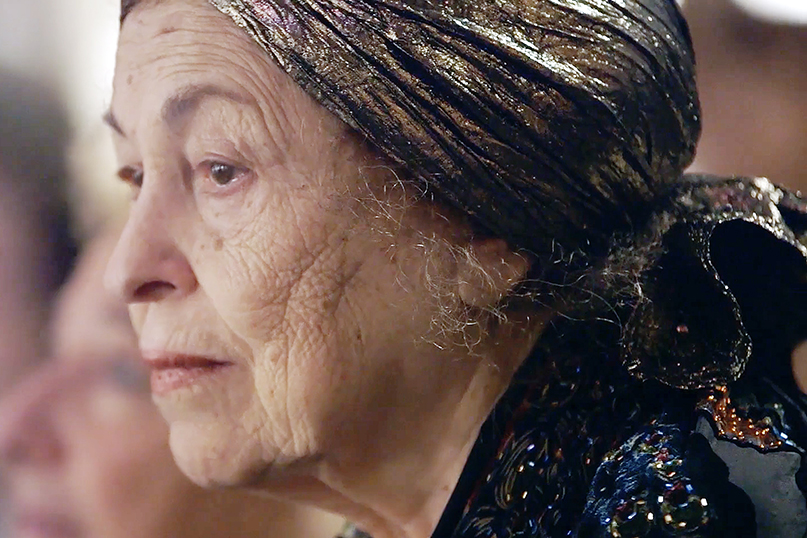
NEW YORK (JTA) – When Helene Aylon was a girl in Borough Park, Brooklyn, it was impossible to imagine she would one day become a barrier-breaking fine artist. After all, the principal of the Shulamith School for Girls, where Aylon was a student, persuaded her parents not to allow her to attend an arts high school in Manhattan. It just wasn’t something a good Jewish girl did.
But after marrying at 18, Aylon began taking art classes at Brooklyn College, where one of her professors mentioned her to the artist Mark Rothko, who invited her to his studio. The two connected over their shared Jewishness even more than their art.
Aylon went on to become a force in the art world, motivated by feminism, nuclear dis-armament and concern about what we now call climate change. She worked first as a painter and moved into experiential and installation art, which was the focus of her later years. Her work was often deeply autobiographical, reflecting her own evolution as a woman and as a Jew.
Aylon died in New York of COVID-19 on April 6. She was 89.
Aylon was born Helene Greenfield in Brooklyn in 1931. She married Rabbi Mandel Fisch z”l, with whom she had two children. The week Aylon turned 30, her husband died of cancer. Her first artistic commission was a mural on the wall of a youth employment center in Brooklyn. When a news photographer who arrived to take her picture asked her name, she spontaneously gave it as Helene Aylon. She was known by that name for the rest of her life.
As a single mother of two young children, Aylon struggled to be present for them and for her art. “I felt guilty all the time,” she wrote in her memoir, Whatever is Contained Must Be Released: My Jewish Orthodox Girlhood, My Life As A Feminist Artist (The Feminist Press, 2012).
Aylon’s liberation came with the rise of the feminist movement, which she called “my salvation.” It was “a rebirth that dazzled my imagination like a sunrise, and plucked me out of the guilt that was caving in on me,” she wrote. After her daughter departed for college, Aylon moved to Wesbeth, an artists’ residence in Manhattan, where she remained, but for a decade spent in Berkeley, California, until she died.
In 1969, Aylon started experimenting with the idea of creating “painting that revealed itself, in an attempt to introduce an evolving feminist consciousness to a medium that had been firmly dominated by the notion of a heroic, and almost exclusively male, American idiom,” wrote her art dealer, Leslie Tonkonow.
In 1982, she created the Earth Ambulance, a truck disguised as an ambulance that she drove across the United States, visiting military bases, uranium mines and nuclear reactors. At each location, she scraped earth into pillowcases, arriving back in New York in time for a nuclear disarmament rally at the United Nations. Ten years later, in celebration of the end of the Cold War, a variation of the piece was presented at the Brooklyn Bridge Anchorage. In 1985, to mark the 40th anniversary of the bombing of Hiroshima and Nagasaki, Aylon worked with young Japanese women to place sacks filled with rice, grain, pods, and seeds in a river to float toward the two cities.
“She was a rare person and artist, fearless, truly inspirational, but we are so blessed to have had her example,” said artist Archie Rand. “As under-appreciated as it is, it will ac-cumulate the sediment of recognition in time. Of that I am sure.”
In the 1990s, Aylon began turning toward Judaism in her nine-part work “The G-D Project.” The first installation, “The Liberation of G-d,” was constructed from shelves lined with open copies of the Hebrew Bible. Instances of misogyny, violent language, or a woman’s name omitted from the text were highlighted in pink. Another installation featured a Jewish marital bed covered in the cloths that some observant women use to check if they have had enough “clean days” after menstruation to immerse in a ritual bath. “My Notebooks” consisted of 54 blank notebooks with images of schoolgirls pro-jected across them that Aylon dedicated to the wives of the medieval Jewish scholars Rashi and Maimonides – “for surely they have something to say.”
“She was one of the most powerful human beings I ever met,” said Rabbi David Ingber, the spiritual leader of Romemu congregation in New York who, like many rabbis, was invited by Aylon to dialogue about her work at the places she exhibited. “She was fiercely unique, energetically rigorous in her truth-telling, a woman who touched so many lives with her art and her heart. I was so privileged to call Helene a friend, a congregant and an inspiration.”
At once fierce and fragile, Aylon often dressed in a turban-like headwrap and flowing clothes, her voice breathy and her manner gentle, even as her ideas were revolutionary.
“She stood by her beliefs, undaunted, and was happy to take on controversy,” said her daughter, Renee Emunah. “She was visionary, and at the same time that she was an activist she also cared about aesthetic beauty.”
Aylon’s work is in the permanent collections of the Whitney Museum of American Art in New York, the Museum of Modern Art in San Francisco and The Jewish Museum. It was also featured in the show “Matronita” at Israel’s Ein Harod Museum of Art and at Pittsburgh’s Andy Warhol Museum.
Aylon is survived by two sisters, Linda Silberstein of Los Angeles and Sandy Ferziger Gottleib of Jerusalem; a son, Nathaniel Fisch of Princeton, N.J.; a daughter, Renee Emunah of Bolinas, California; four grandsons and a granddaughter.
In a 2016 article about being one of four women to be honored with a Lifetime Achievement Award by the Women’s Caucus for Art, Aylon said, “I hope I would be re-membered in a loving way because I’m not trying to defame Judaism but I wanted to tell the truth about it to see what we can do about it.”
Adam ‘Yitz’ Friedman was a publicist and Hasidic scion
By Uriel Heilman
(JTA) – In another lifetime, Adam “Yitz” Friedman might have been a Hasidic rebbe rather than the Madison Avenue publicist he eventually became.
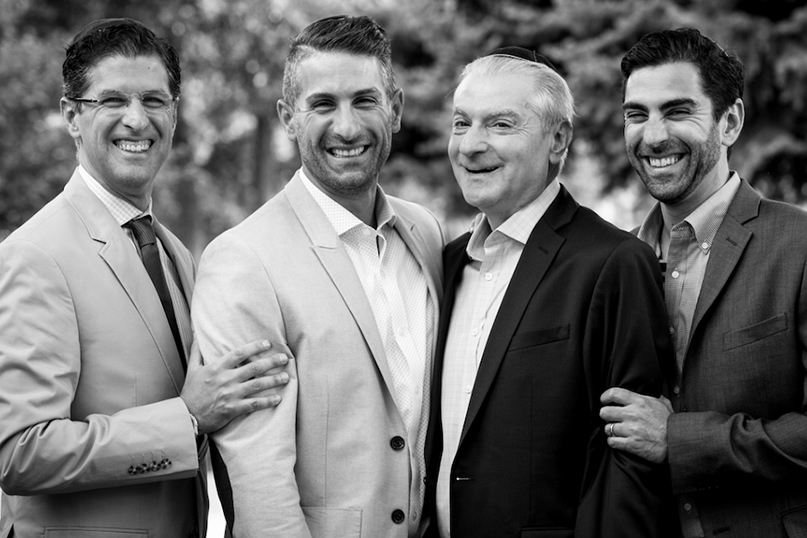
Named for his grandfather, Yitzchok Friedman, the founder of the Boyan Hasidic dyn-asty, Friedman hailed from a line of Hasidic rebbes that included the leaders of the Ruzhin, Sadigura and Rachmastrivk dynasties.
But Friedman, who was born in Brooklyn in 1945, was destined for a different life. He went into public relations, making a name for himself in a business all about promoting other people’s greatness. In 1999, he founded his own firm, Adam Friedman Associates.
Nevertheless, Torah always was an integral, daily part of Friedman’s life.
“To my father, Torah is not a text or an activity, but an all-encompassing worldview that encompasses and enriches every part of life,” his eldest son, Israel Friedman of New Rochelle, New York, wrote in a tribute shared with members of his synagogue. “He presented Torah life values through mesmerizing stories that conveyed nuance through simplicity and through books.”
Friedman died in New York of coronavirus on April 10. He was 75.
A lifelong resident of the city, Friedman grew up in Brooklyn, raised his children in New Rochelle and moved late in life to Manhattan’s Upper East Side. He is survived by his wife of 52 years, Shirley Friedman; three sons and their families; and several grandchildren.
Friedman was a kind man with a deep love for his family and an insatiable interest in learning. He also loved teaching. Until the COVID-19 pandemic hit, Friedman taught crisis communications, public affairs and integrated marketing as an adjunct assistant professor at New York University. Friedman’s primary professional expertise was in the financial sector, but he represented clients as diverse as Fortune 500 companies, Jewish organizations and book authors. A graduate of Brooklyn College, he earned a master’s from New York University, and an MBA from the Baruch School of Business.
A member of the Young Israel of New Rochelle, the Orthodox synagogue in Westchester County to which Friedman belonged for several decades, recalled how Friedman helped community members who had lost their jobs in the 2008 financial crisis find new employment. Generous with his time, he was known for being a gentleman and someone who took great joy in the happiness of others.
“Yitz was a delightful person whose warmth and genuine goodness filled the room,” Ira Parness, a longtime friend, wrote in a tribute. “Anytime he came to visit recently, Yitz would smile when he saw me and pull me in for a warm handshake hug and ask for my family’s well being.”
Hal Willner was a music producer on ‘Saturday Night Live’
By Talya Zaks
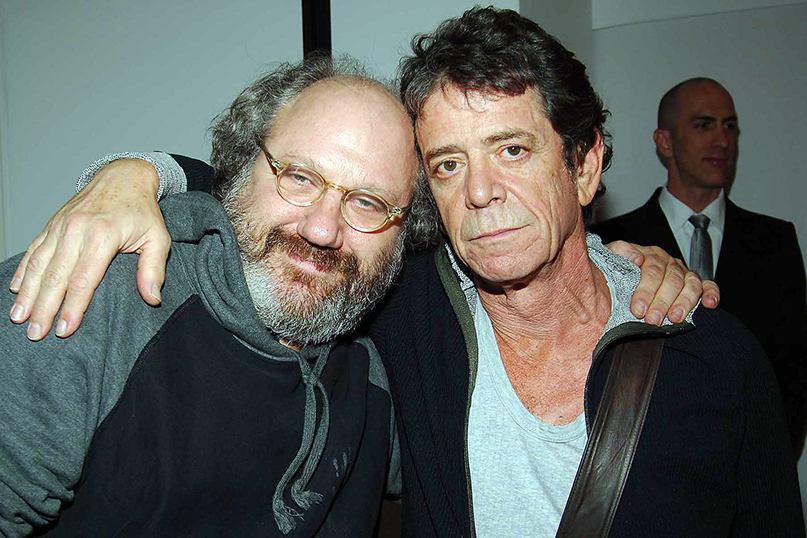
(JTA) – Hal Willner might have been the most willfully strange person in show business.
The music producer, who died April 7 at age 64 of complications of coronavirus, had a magic touch. He could get anyone to do anything: Tom Waits to sing an unrecognizable, railroad-rough version of “Heigh Ho” from Disney’s “Snow White”; R & B icon Macy Gray to deliver a sultry, gravelly take on the old sea shanty “Off to Sea Once More”; Leonard Cohen to jam out a jazz-inflected version of his “Who By Fire,” a take on the High Holidays prayer “Unetaneh Tokef,” with the exuberant tenor saxophonist Sonny Rollins.
While Willner had a far reach, and served as a longstanding producer for Lou Reed, the English singer Marianne Faithfull and the guitarist Bill Frisell among others, he was best known for his deeply surprising tribute albums. Those included “Stay Awake: Various Interpretations of Music from Vintage Disney Films” – which featured Los Lobos, James Taylor, Sinéad O’Connor and Sun Ra alongside Waits – and “Rogue’s Gallery: Pirate Ballads, Sea Songs, and Chanteys” – with performers including Bono, Sting and Nick Cave – as well as albums dedicated to the composer Kurt Weill, jazz legends Thelonious Monk and Charles Mingus and, unexpectedly, the writers Edgar Allan Poe and William S. Burroughs. If there were other producers as eager to produce a live tribute to Shel Silverstein as an album by Sonic Youth, they were few and far between.
His voracious curiosity and supreme sense of fun reached their widest audience through “Saturday Night Live,” where Willner, a longtime collaborator of the show’s creator Lorne Michaels, oversaw the music that backed the skits since 1980. The cringe-inducing elevator jazz swoop at the opening of the iconic Andy Samberg-Justin Timberlake short “D*** in a Box”? The hold-music piano flourishes accompanying Adam Sandler’s recurring role as Operaman? The existentially upsetting combination of Haddaway’s “What is Love” with Will Ferrell and Chris Kattan’s eternal sideways head-bopping?
Willner’s influence was everywhere in the show, shaping its character – quirky, irreverent, intent on making absurd premises absurdly funny – through the seasons.
In many ways, Willner exemplified the ethos of postwar Jewish entertainment. His father, a Holocaust survivor, owned a Philadelphia delicatessen where Willner worked through his childhood. As he told The New York Times in 2017, his father’s tales of the concentration camps mixed with the Americana in which he was immersed to create an imagined world that was simultaneously dark and ludicrous.
“I remember having dreams, and it would be like Yosemite Sam was a guard at the camps,” he said.
When he moved to New York City to attend NYU in 1974, he found a world nearly as strange as that of his imagination: one where Redd Foxx introduced him to cocaine when he was 18, street fights served as entertainment and creativity ran wild, especially in the East Village, where he lived.
In the end, there was no better example of his character as an artist than the unlikely Cohen-Rollins collaboration he engineered on the long-gone NBC show “Night Music,” another effort on which he worked with Lorne Michaels.
There was Leonard Cohen, singing a modern take on one of the most solemn prayers in the Jewish canon – wondering who will die this year, and how – and there, behind him, was Rollins, contorting ecstatically as he played gleeful, arcing riffs. The joy and the darkness, there in one, an unlikely and immensely moving pair.
This year, it was Willner’s untimely turn to go. With Cohen’s seriousness, we’ll mourn him. And with Rollins’ pleasure, we’ll remember all the gifts he gave us while he was here.









 Southern New England Jewish Ledger
Southern New England Jewish Ledger